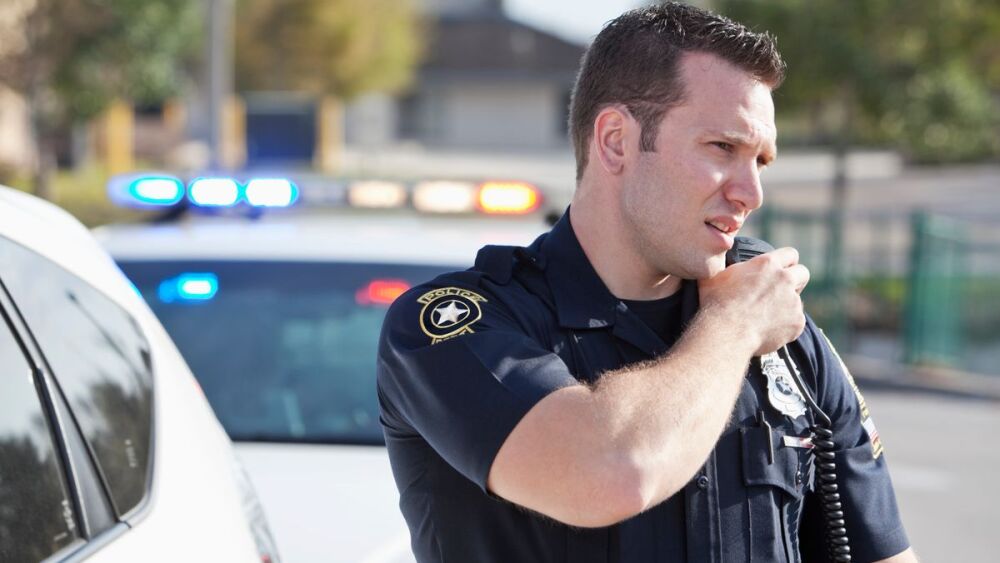“We need to get off the PowerPoints and onto the mats.”
That quote — one of more than 250 responses related to defensive tactics training in the “What Cops Want in 2025" survey — echoes a sentiment shared by officers nationwide. When asked what specific defensive tactics or skills they’d like more training in, officers didn’t call for new tools or techniques. They called for repetition, realism and relevance.
From ground control and weapon retention to recognizing pre-attack cues and transitioning from verbal to physical tactics, officers are asking for defensive tactics training that reflects what’s actually happening on the street — and how fast it can turn violent.
Let’s take a closer look at what officers say is missing from current defensive tactics training programs, and what they need to feel more confident and capable in the field.
What officers are saying
The survey results reveal a clear and consistent pattern: officers want less theory and more practice. They’re seeking hands-on, pressure-tested defensive tactics that help them control violent encounters and prevent unnecessary escalation.
This strain is showing up across several specific skill areas and their feedback tells a direct story:
Officers want more grappling and ground control training.
What this means: Officers are overwhelmingly calling for Brazilian Jiu-Jitsu (BJJ), wrestling and other control-based techniques that allow them to subdue combative subjects without relying on strikes or weapons. Many noted that real-world fights almost always go to the ground and they don’t feel prepared.
One officer wrote, “BJJ. Jiu-jitsu. We need it.” Another shared, “Mandatory ground fighting classes with actual contact, not just technique demos,” with another adding, “Control tactics that don’t rely on brute strength.” Several noted they want this training not as an optional off-duty activity, but as part of their regular in-service program: “We need consistent BJJ training, not a few hours once a year.”
| RELATED: 10 hidden benefits of Brazilian Jiu-Jitsu for police officers
Weapon retention and edged-weapon defense remain top concerns.
What this means: Officers expressed deep concern about controlling their own weapons during a fight and defending against edged weapons in close quarters. Many said these scenarios aren’t trained nearly enough, despite the real risk they pose in every encounter.
One officer wrote, “Weapon retention, knife defense and close-quarters combat.” Another said, “Retention training should be mandatory — that’s where officers get hurt.” A third emphasized, “Ground control and retention — most fights happen at bad distances.” These officers aren’t asking for complex tactics. They’re asking for repetition in the basics to ensure they’re not outmatched when someone tries to take their weapon or pulls a blade.
Officers want to better recognize pre-assault cues.
What this means: Several officers noted they’re not being taught how to identify when an encounter is about to turn violent. They want more training on pre-attack indicators — subtle behaviors, movements or cues that could help them respond proactively rather than reactively.
One respondent wrote, “We need to know what to look for before it happens ... cues and behaviors.” Another shared, “Train officers on what the lead-up to a fight actually looks like.” Another stated simply, “Pre-assault cues and recognition ... it’s a critical skill.” Many emphasized that this shouldn’t be a standalone training module, but embedded into every defensive tactics scenario.
They want to learn how to transition from words to action.
What this means: Officers expressed frustration that de-escalation is often presented as something separate from defensive tactics — as if communication ends and tactics begin. They want integrated training that teaches how to recognize when verbal efforts are failing and how to transition decisively and lawfully to physical control.
One officer said, “Show us how to move when talking stops working.” Another noted, “Too many of us are taught to talk until we’re behind.” And another put it bluntly: “There’s a huge gap between de-escalation and defensive tactics. We need both to flow.”
They want more frequency, not more policy.
What this means: Above all, officers want to train more often. Many described current defensive tactics programs as too infrequent, too policy-heavy or too far removed from real-world scenarios. They’re not asking for more paperwork; they’re asking for reps.
As one officer wrote, “Quarterly defensive tactics should be required.” Another said, “Live scenario-based defensive tactics training, not classroom theory.” One summed it up: “Less talking, more doing. Muscle memory saves lives.”
| RELATED: Defensive tactics for police officers: Essential strategies for safety and control
In this episode of our principle-based defensive tactics series, “Guardians of the Ground,” Tyson Kilbey and Joe Sullivan demonstrate how to escape the mounted position — a critical Jiu-Jitsu skill with real-world application. Built for officers at all ranks, the series blends technique with case law, articulation, and de-escalation strategies to help officers stay safer and more confident under pressure.
Zoom in
Here are four achievable actions departments can take now to address the specific defensive tactics concerns voiced by officers in the survey — without repeating the same cycle of once-a-year, check-the-box training.
1. Prioritize grappling and ground control as a core skill: Officers repeatedly emphasized the need for consistent, hands-on control tactics — especially those that don’t rely on size or strength. While BJJ was named often, the underlying request was clear: officers want to learn how to gain control when a fight goes to the ground, and they want to practice it regularly enough to build confidence and retention. Many respondents pointed out that physical control — not strikes or standoff tools — is what most encounters demand. And for newer officers especially, confidence in these skills may reduce both overreactions and injuries.
What departments can do: Offer quarterly in-service training blocks that focus on dominant position, escapes and control transitions. Provide on-duty mat time when possible and explore partnerships with local grappling gyms to reduce costs. Some agencies are reimbursing membership fees or allowing certified instructors to lead sessions in-house. These low-cost, high-impact reps make it easier for officers to stay sharp and reduce the likelihood of a struggle turning into a use-of-force report.
2. Build weapon-retention and edged-weapon scenarios into every defensive tactics training cycle: Officer responses made it clear: the danger of weapon disarm attempts or edged-weapon attacks isn’t theoretical — it’s a real and persistent concern in close-quarters encounters. Officers noted that training in this area is rare, despite it being one of the most chaotic and high-stakes encounters they can face. Unlike traditional drills, these scenarios require split-second reactions and practiced motor patterns. When they’re not practiced, they fail.
What departments can do: Move beyond static demos. Design standing and ground-based drills that mimic real disarm attempts — including surprise grabs, close-quarters stabs and retention struggles while off-balance. Build these scenarios into every defensive tactics training rotation so that weapon protection becomes second nature, not a one-time exposure.
| RELATED: Gun grabs and shots fired: What real-world incidents reveal about weapon retention
3. Integrate pre-assault cue recognition into scenario-based training: Recognizing the signs of a brewing assault is a skill that can prevent escalation altogether. Officers want to be trained not just to react to attacks, but to identify when a subject is shifting into pre-violence mode — a tightened jaw, a bladed stance, checking distance or repeated glancing. They’re not asking for more videos; they’re asking to practice spotting these cues in context.
What departments can do: Start with a short module on common pre-assault indicators. Use bodycam footage, debrief examples and even instructor roleplay to demonstrate what to look for. Then fold those cues into scenario-based drills. For example, a subject might go from compliant to resistant mid-call and officers must act based on their ability to read the shift. The goal is not just to react faster, but to make safer decisions earlier.
4. Train the transition from verbal to physical control: Survey respondents didn’t reject de-escalation — they called out the gap between verbal engagement and physical control. Many said they’re unsure when to switch from talking to doing, and how to do it in a way that’s tactically sound and legally defensible. Without practice, that gap becomes a hesitation point — and in the field, hesitation can lead to injury.
What departments can do: Develop drills that begin with dialogue and escalate based on subject behavior. Teach officers to evaluate tone, posture and proximity, and to respond with a controlled physical tactic before things spiral. Include articulation practice: what did you see and why did you move? When officers are trained to recognize the transition point — and to own it — they’re safer and more confident in every encounter.
| RELATED VIDEO: Coaching gun retention on the ground
Zoom out
Departments that invest in more relevant, frequent and realistic defensive tactics training aren’t just helping individual officers — they’re making their entire organization more effective, accountable and resilient. Here’s what that investment looks like in practice and what it delivers in return:
1. Better outcomes during use-of-force encounters: When officers train regularly in control-based tactics like grappling and retention, they’re more likely to resolve physical encounters quickly and professionally — without resorting to higher levels of force. Officers who know how to establish control early can avoid prolonged struggles, reduce injuries and make safer decisions under pressure.
What it looks like in action: An officer who’s trained to manage a suspect on the ground doesn’t panic when a fight turns physical. A well-practiced retention technique prevents a firearm grab from turning deadly. These are the kinds of moments where reps matter, and where better outcomes mean fewer injuries, fewer complaints and fewer headlines.
2. Stronger officer confidence and decision-making: Defensive tactics training done well doesn’t just build physical skills — it builds clarity. Officers who understand when to move, how to move and why to move are less likely to hesitate, freeze or escalate unnecessarily. Confidence in these skills creates space for better judgment in fast-moving situations.
What it looks like in action: An officer recognizes a pre-assault indicator and takes control early, rather than reacting late. Another transitions from verbal direction to physical control without stumbling through the middle. Confidence doesn’t come from theory; it comes from practice.
3. Higher training credibility and stronger public trust: The public expects officers to use force only when necessary, and to do so with competence and control. When departments prioritize scenario-based, real-world training, they reinforce the message that their officers are not just authorized to use force, but trained to use it responsibly.
What it looks like in action: Supervisors, trainers and officers can articulate not just what they did — but why they did it, based on consistent training and policy alignment. This transparency builds trust with the community and credibility in internal investigations, media briefings and courtroom testimony.
The bottom line
Defensive tactics training can’t be treated as a formality — not when the risks officers face are immediate, physical and unforgiving.
In the “What Cops Want in 2025" survey, officers didn’t just call out gaps — they offered a roadmap. They asked for training that reflects what actually happens on the job: suspects resisting on the ground, weapons being grabbed, edged weapons being drawn and violence escalating before a word is spoken.
What they’re asking for isn’t complicated. It’s consistent training in core control skills. It’s knowing when to move, how to move and why it matters. It’s the ability to recognize a threat — and act without hesitation because they’ve done it before, not just discussed it. For departments, the challenge isn’t inventing something new; it’s reprioritizing what already matters. Make time for control-based training. Integrate pre-assault indicators. Connect communication with action. Support your officers not just by equipping them, but by preparing them.
Because when officers are confident in their training, they’re more decisive, more effective and more likely to walk away uninjured — along with the people they’re trying to help. And as one officer reminded us: “We should be training weekly — not yearly.”









